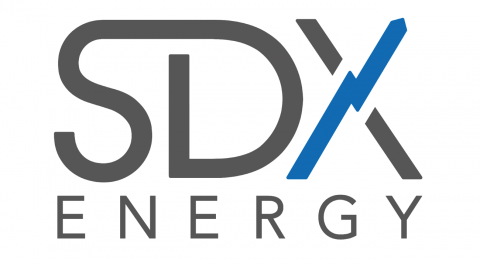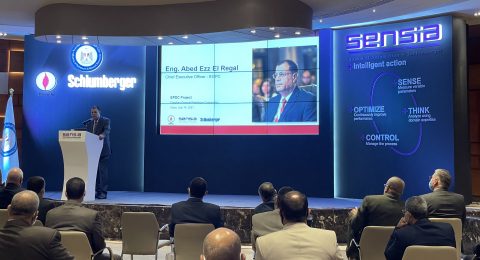CO2 miscible flooding has become an important method in Enhanced Oil Recovery (EOR) for recovering residual bypassed oil, and in addition it may help in protection of the environment as CO2 is widely viewed as an important agent in global warming.
Most CO2 floods require injecting a large slug of CO2 followed by injection of water that drives the CO2 to maximize sweep efficiency. Modifying CO2 viscosity is critical because of the differences in CO2 viscosity and density relative to the crude oil-in-place that can set the stage for pre-mature break-through of the gas. Such break-through results from a combination of gravity over ride and the CO2 channeling through more-permeable zones. The end result is less oil ultimately recovered.
The response to this challenge needs alternating injection of water and gas (WAG), which improves sweep efficiency. But this posed another problem: While sweep improves with WAG, displacement efficiency may decline because the water can shield the oil from the solvent-like nature of the gas. In other words, the technical challenge isn’t only finding reservoirs suitable for carbon dioxide miscible flooding but also to be able to control proper mobility and proper sweep of the injected gas.
The project prepared by the abovementioned engineers studies the possibility Of CO2 Miscible Flooding application in Egyptian Western Desert Oil Fields. The first step in the study is to select the most suitable depleted reservoirs for injecting carbon dioxide (CO2). The second step is to find depleted gas reservoirs that have the possibility of underground storage of CO2 and lies geographically near the newly established reservoirs to be used in the future in CO2 miscible flooding.
The geologic storage of carbon dioxide is seen as a potentially feasible. Which is necessary for global carbon emission. Geologic storage involves injection of CO2 into underground formations. Once placed there, the expectation is that the CO2 will stay there until it may be used in the future for EOR.
Generally EOR methods consist of two main groups: thermal and non-thermal. Thermal EOR includes all the methods that use heat as an external agent to displace immobile residual oil in the reservoir, as stem injection, steam flooding and in situ combustion. Non-thermal EOR includes all methods that use some chemicals as external agents that help to improve the mobility of the immobile crude oil, such as: polymer flooding, alkaline, microbial, and the miscible flooding methods that may use the injection of CO2, N2, methane, natural gas.
Flooding a reservoir with CO2 can occur either miscible or immiscible. Miscible CO2 displacement is only achieved under a specific combination of conditions, which are set by four variables: reservoir temperature that has to be above 31.1o C , reservoir pressure which has to be greater than 73.8 bars , injected gas composition, and oil chemical composition.
From a fundamental point of view, CO2 miscible flooding works on a very simple principle, namely, that given the right physical conditions, CO2 will mix miscible with oil, acting much like a thinning agent. After miscible mixing, the fluid is displaced by a rush phase, typically water.
The miscibility is described as: “the ability of two or more substances to form a single homogeneous phase when mixed in all proportions.” For petroleum reservoirs, miscibility is defined as that physical condition between two or more fluids that will permit them to mix in all proportions without the existence of an interface. If two fluid phases form after some amount of one fluid is added to others, the fluids are considered immiscible.
Technically, the critical consideration is that in miscible displacements the residual oil saturation, that is, the oil left after being miscible contacted with CO2, is reduced nearly to zero. This leads to high oil recoveries and favorable project economics. This is in distinction to immiscible displacements where considerable residual oil saturations can remain, often leading to unfavorable project economics.
The Egyptian Western Desert is one of the promising oil producing areas in Egypt. The first field was discovered in 1966 (Alamein field) with annual production of 33,000 barrels of oil and proven reserve about 71.2 MM barrels which represented 2% of Egypt’s reserves for that year. The first gas field in the Western Desert was discovered in 1971, called the Abu Roash field.
The Western Desert main producing geological formations are, ABUROASH “C”, which consists of sandstone, ABUROASH “D”, which consists of limestone, and BAHARIYA, which consists of sandstone.
The Depths range from 900 meters to 3400 meters, where they all allow the application of the CO2.
The Reservoirs pressure range from (1750 PSI TO 5000 PSI) as the initial pressure and, the current pressures range from (1250 PSI To 3500 PSI).
The temperature of different reservoirs in the Western Desert ranges from 92° F to 127 ° F. while the API quality ranges from 35 to 40.
Thus the best five reservoirs suitable for CO2 miscible flooding in Egypt belong to Badr Petroleum Company (Bapetco) and are located in three fields. Furthermore, the suitable storage reservoirs are located in in one of the General Petroleum Company (GPC)’s fields. The nominee reservoirs need about 50.34 BSCF of CO2 to be injected. The selected reservoirs for storage have a capacity around 62.1 BSCF of CO2 and need about 3 years for storage.
In conclusion, CO2 flooding is a proven enhanced oil recovery technique to obtain high oil recovery from complicated formations and can be applied to various types of oil reservoirs. The Possibility Of CO2 Miscible Flooding application to Egyptian Western Desert Oil Fields would be very beneficial for Egypt’s reservoirs and subsequently the national economy.
By Ezz El Din Allam – Reservoir Studies General Manager, EGPC







